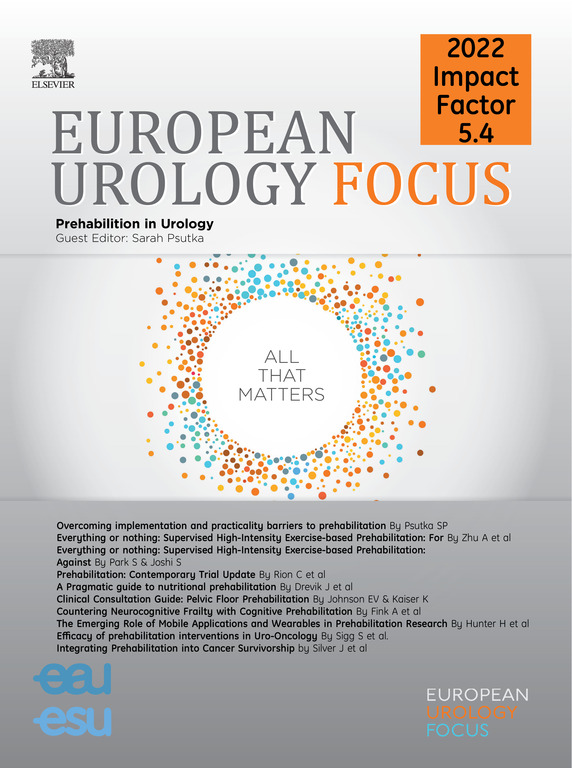Innovating Indwelling Catheter Design to Counteract Urinary Tract Infection
IF 5.6
2区 医学
Q1 UROLOGY & NEPHROLOGY
引用次数: 0
Abstract
Background and objective
Bacteriuria is anticipated in long-term indwelling catheter (IDC) use, and urinary tract infections (UTIs) and related issues are common. Defence mechanisms against infection are undermined by the presence of a Foley catheter, and adjustments to design could influence UTI risk.
Methods
We reviewed the various aspects of IDCs and ureteric stent designs to discuss potential impact on UTI risk.
Key findings and limitations
Design adaptations have focussed on reducing the sump of undrained urine, potential urinary tract trauma, and bacterial adherence. Experimental and computational studies on ureteral stents found an interplay between urine flow, bacterial microcolony formation, and accumulation of encrusting particles. The most critical regions for biofilm and crystal accumulation are associated with low shear stress. The full drainage system is the functioning unit, not just the IDC in isolation. This means reliably keeping the drainage system closed and considering whether a valve is preferred to a collection bag. Other developments may include one-way valves, obstacles to “bacterial swimming”, and ultrasound techniques. Preventing or clearing IDC blockage can exploit access via the lumen or retaining balloon. Progress in computational fluid dynamics, energy delivery, and soft robotics may increase future options. Clinical data on the effectiveness of IDC design features are lacking, which is partly due to reliance on proxy measures and the challenges of undertaking trials.
Conclusions and clinical implications
Design changes are legitimate lines of development, but are only indirect for UTI prevention. Modifications may be advantageous, but might potentially bring problems in other ways. Education of health care professionals can improve UTIs and should be prioritised.
Patient summary
Catheters used to help bladder drainage can cause urinary infections, and improvements in design might reduce the risk. Several approaches are described in this review. However, proving that these approaches work is a challenge. Training professionals in the key aspects of catheter care is important.
创新留置导尿管设计,应对尿路感染。
背景和目的:长期使用留置导尿管(IDC)会导致细菌尿,尿路感染(UTI)和相关问题也很常见。福里导尿管的存在破坏了防止感染的机制,对设计进行调整可能会影响 UTI 风险:我们回顾了 IDC 和输尿管支架设计的各个方面,讨论了其对 UTI 风险的潜在影响:主要发现和局限性:设计调整的重点是减少未排出尿液的底盘、潜在的尿路创伤和细菌附着。对输尿管支架进行的实验和计算研究发现,尿流、细菌微菌落的形成和结壳颗粒的积累之间存在相互作用。生物膜和晶体积聚的最关键区域与低剪切应力有关。整个排水系统是一个功能单元,而不仅仅是孤立的 IDC。这意味着要可靠地保持排水系统的封闭性,并考虑是否应使用阀门而不是收集袋。其他发展可能包括单向阀、"细菌游动 "障碍和超声波技术。防止或清除 IDC 堵塞可以利用通过管腔或固定球囊的通道。计算流体动力学、能量输送和软机器人技术的进步可能会增加未来的选择。目前缺乏有关 IDC 设计特点有效性的临床数据,部分原因是依赖于替代措施和开展试验的挑战:设计变更是合理的发展方向,但只能间接预防UTI。修改可能会带来好处,但也可能在其他方面带来问题。对医护人员的教育可以改善 UTI,应优先考虑。患者总结:用于帮助膀胱引流的导尿管可能会引起泌尿系统感染,改进设计可以降低风险。本综述介绍了几种方法。然而,证明这些方法有效是一项挑战。对专业人员进行导尿管护理关键方面的培训非常重要。
本文章由计算机程序翻译,如有差异,请以英文原文为准。
求助全文
约1分钟内获得全文
求助全文
来源期刊

European urology focus
Medicine-Urology
CiteScore
10.40
自引率
3.70%
发文量
274
审稿时长
23 days
期刊介绍:
European Urology Focus is a new sister journal to European Urology and an official publication of the European Association of Urology (EAU).
EU Focus will publish original articles, opinion piece editorials and topical reviews on a wide range of urological issues such as oncology, functional urology, reconstructive urology, laparoscopy, robotic surgery, endourology, female urology, andrology, paediatric urology and sexual medicine. The editorial team welcome basic and translational research articles in the field of urological diseases. Authors may be solicited by the Editor directly. All submitted manuscripts will be peer-reviewed by a panel of experts before being considered for publication.
 求助内容:
求助内容: 应助结果提醒方式:
应助结果提醒方式:


